Metal detectors are used to unearth or spot metal objects from various surfaces. Popularly these type of circuit uses Inductors and its inductive property to sense metal detection. However in this circuit we are using a dedicated proximity inductive sensor to identify the ferrous objects and a buzzer to raise an alarm when detection occurs.
Working of metal detector circuit:
Working of an inductive sensor:
For this circuit we are going to use a proximity inductive sensor PL-05P. This inductive sensor is capable is capable of detecting metals within its range of 5mm. It has a supply voltage range of 10-30V. The inductive sensor has an internal oscillator which generates series of pulses. These pulses will develop a magnetic field around its surface which extends up to its detecting range. So when a metal object enters the detecting area (i.e within its range of 5mm) it will disrupt the magnetic field. The output state changes based on this.
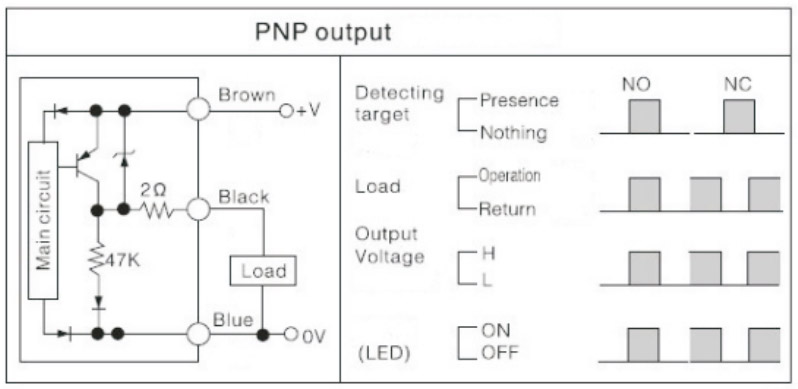 There are different variants available in this Inductive sensor. We have chosen the one with PNP output type as shown in the above diagram. Here when there is not metal objects within sensor sensing range the base voltage of the transistor will be >0.7V. This forces 0 voltage output in the Black wire ( output ).
There are different variants available in this Inductive sensor. We have chosen the one with PNP output type as shown in the above diagram. Here when there is not metal objects within sensor sensing range the base voltage of the transistor will be >0.7V. This forces 0 voltage output in the Black wire ( output ).
Whereas when any metal object enters the sensing range base voltage will drop <0.7 Volts. This activates the transistor and there will be 11.3V(~12V) exhibited across the Black wire. We are going to use these output voltage from the black wire with a comparator and use it as a metal detector.
Buzzer:
The output from the inductive sensor is capable of driving loads up to 200mA. We are using a 5-12V buzzer as sounding element in our circuit. This buzzer draws a maximum of about 30mA current and well within the capability of our inductive sensor.
When the output from the sensor goes high, it drives the buzzer and raises the alarm for detection. When nothing is within the sensor range output of sensor will be low and therefore buzzer will be inactive.
Current consumption:
The sensor consumes about 2.2mA for its working and buzzer takes about 30mA of current. So it’s safe to assume this circuit draws about 35mA of current when its active. Therefore it can be powered using a 12V battery and will be mobile.
Hope this metal detector switch was useful to you. Check out other circuits in our website. If you have any queries, feedback and suggestions do leave them in the comment box below.

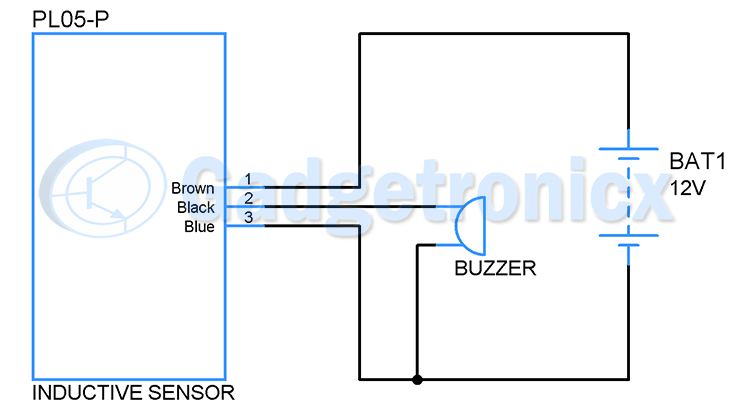
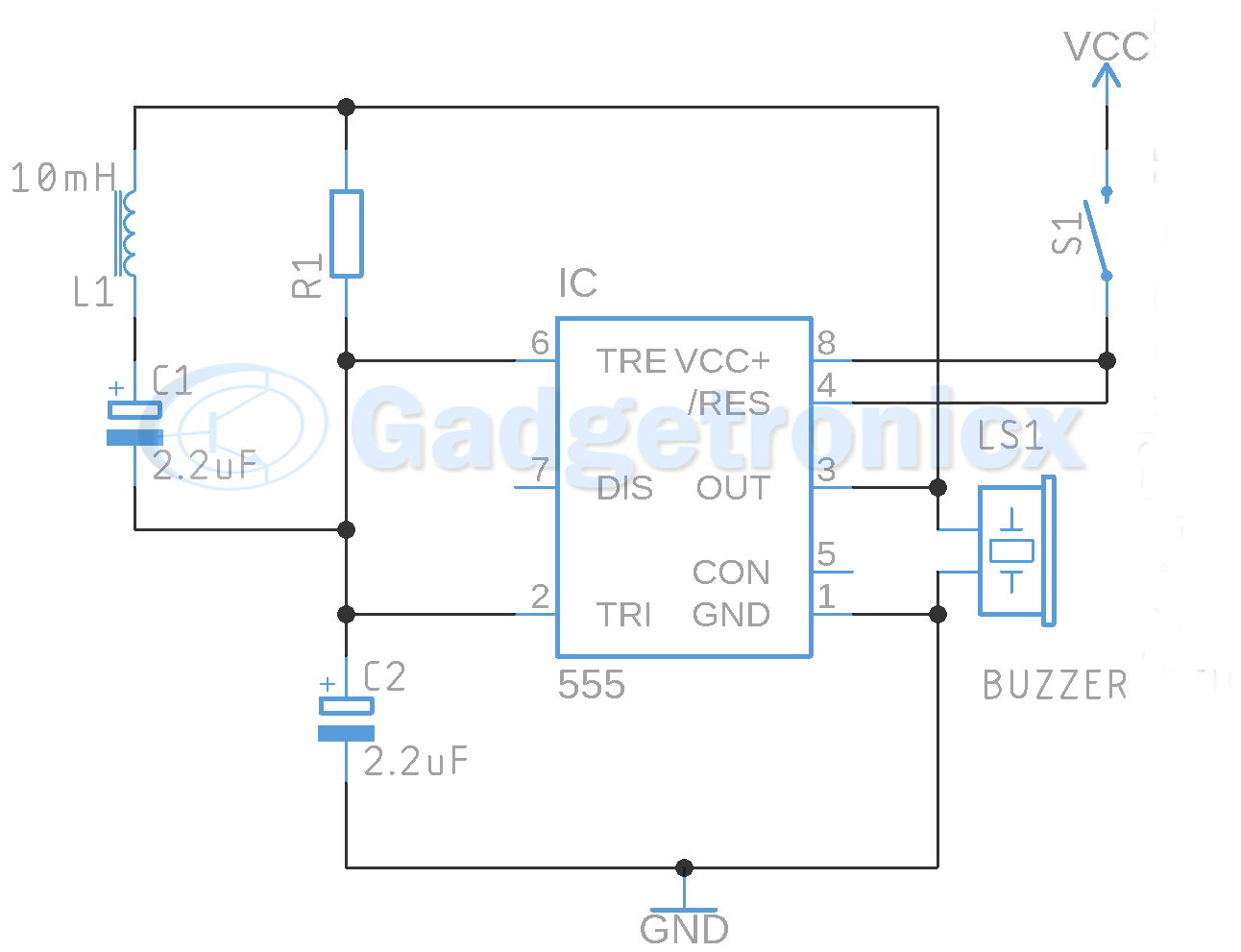
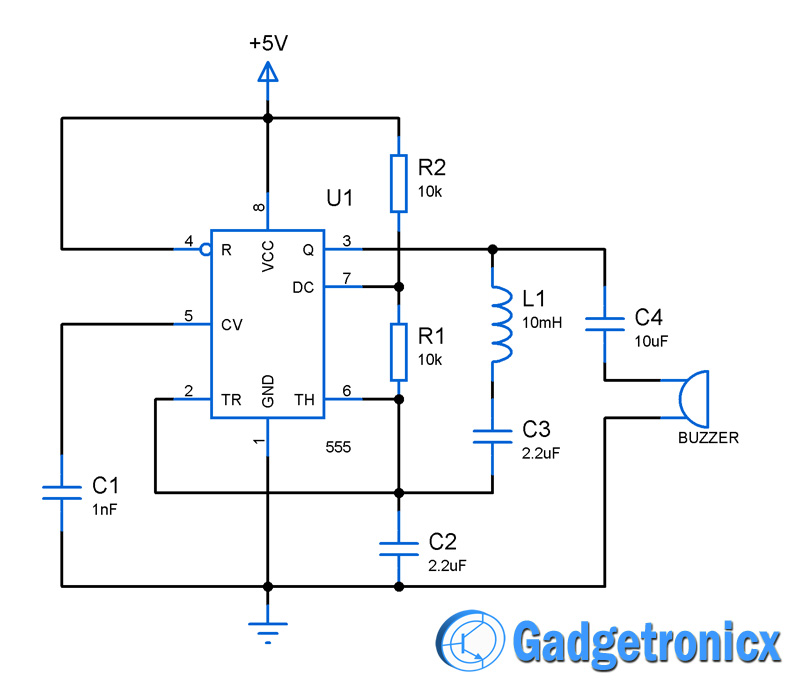
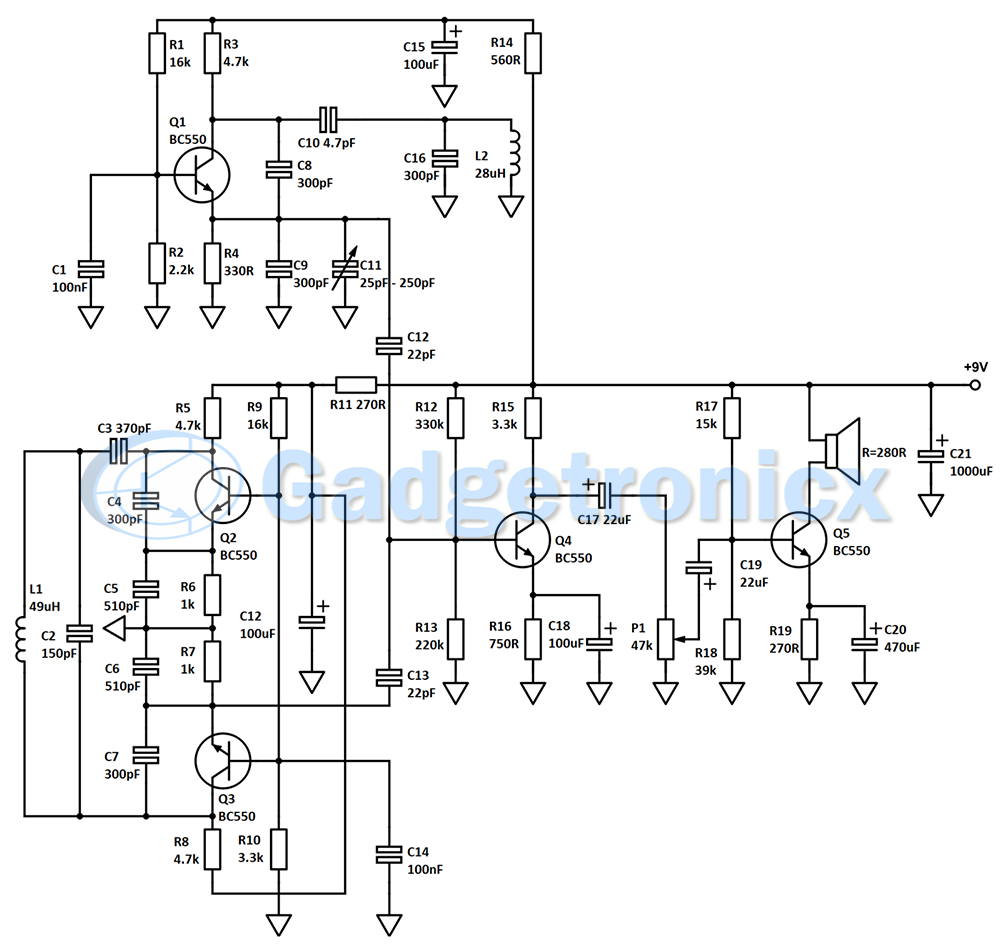
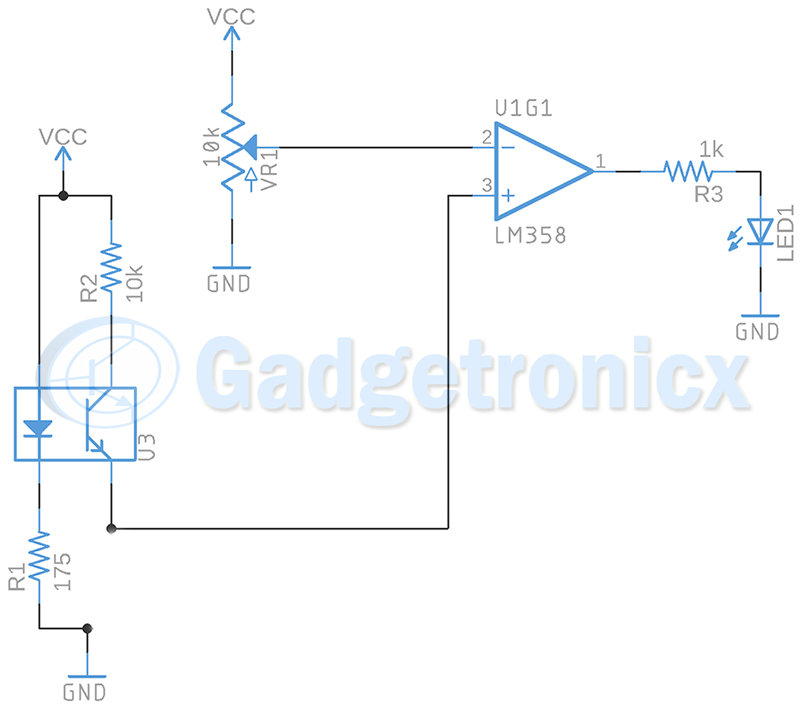
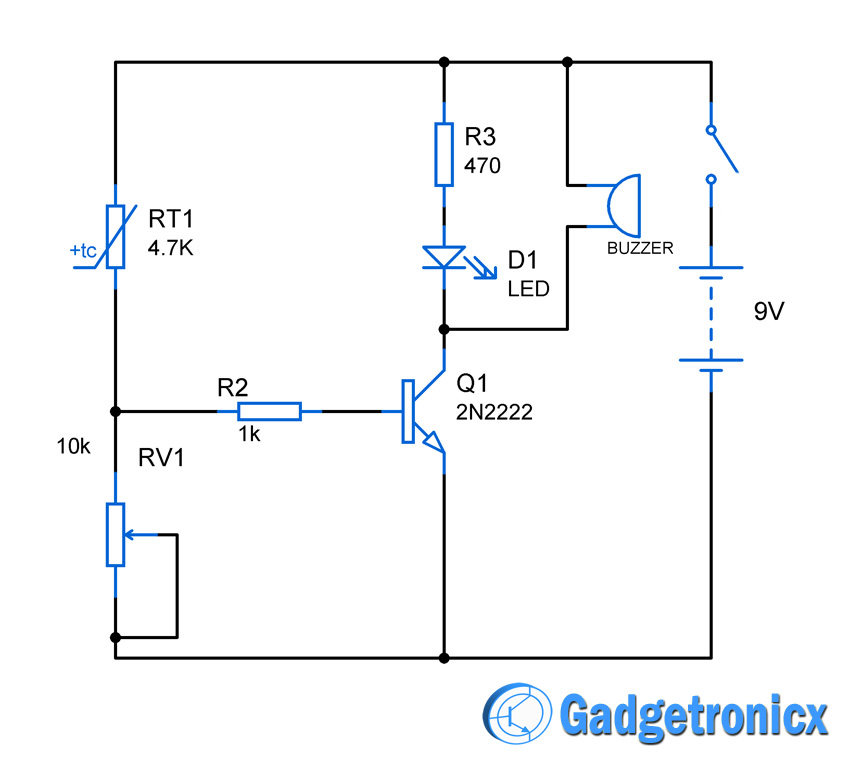
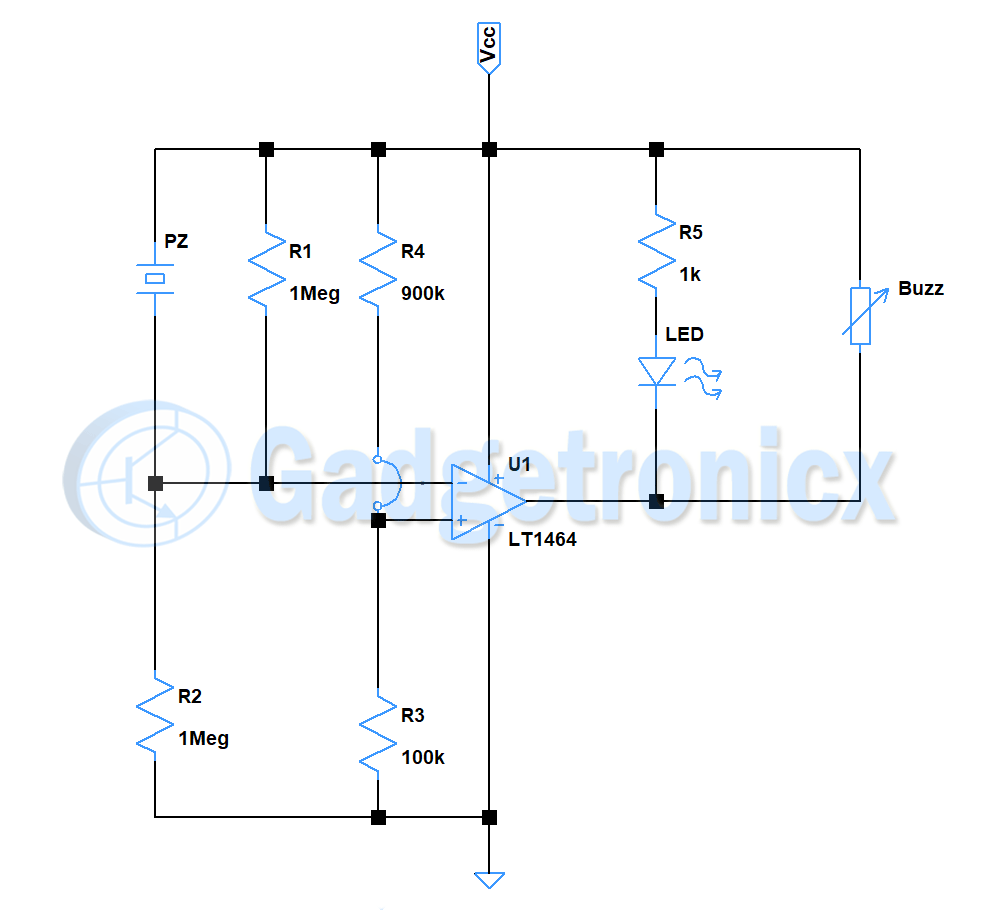
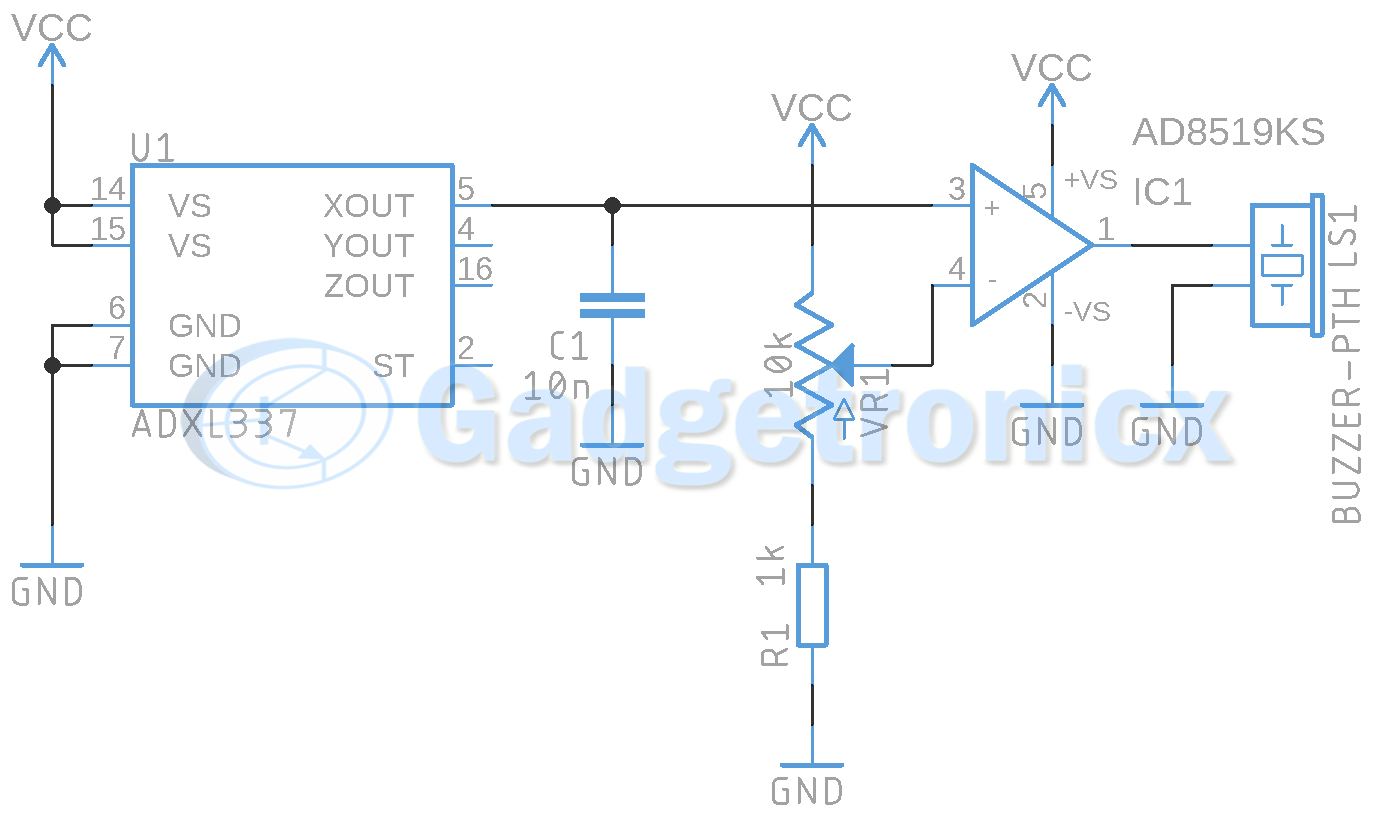
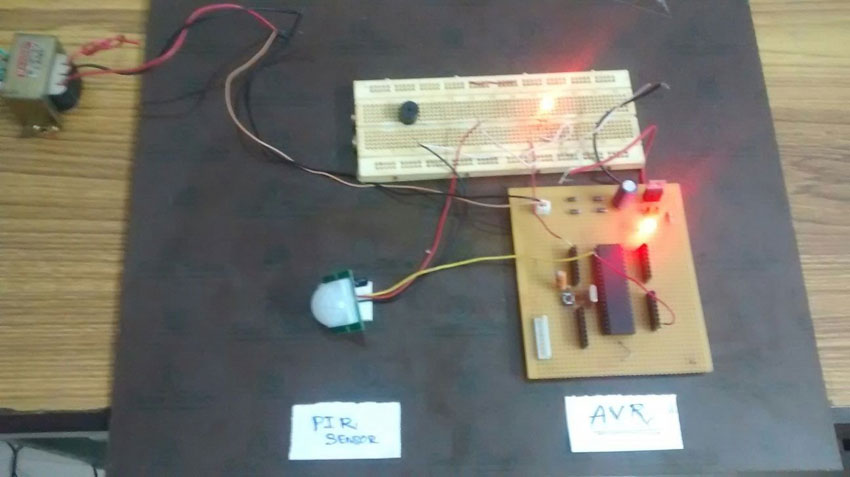
Hello, please send me how to make an ion detector. Thank you